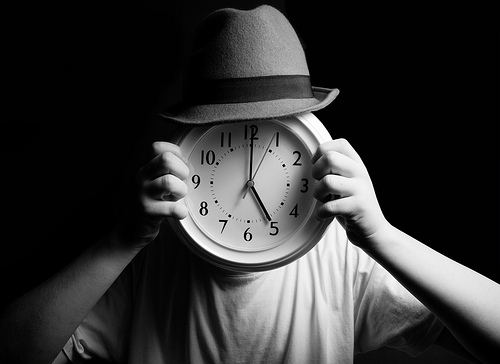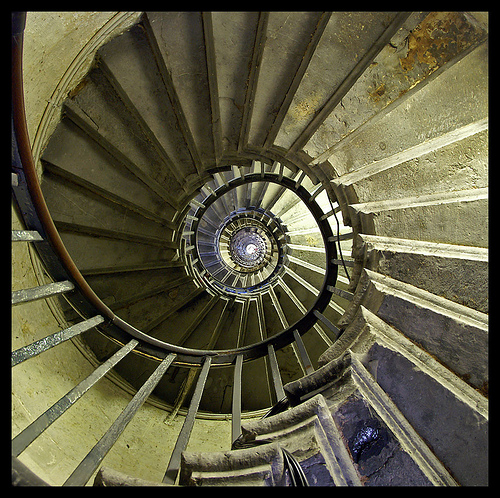Mastering the Passing of Time in Novel Scenes
Scene structure is an essential concept writers must grasp in order to construct solid, fluid novels. I chose that word fluid because I feel readers want something akin to a smooth read. I don’t mean specifically a linear story in which every moment passes in time the same way. I mean the story being told is easy to follow because the scenes string together in a clear flow of time, each giving the sense of real time passing, right here, right now.
This may be a tricky concept for some to grasp, so bear with me a bit. I’ve written some posts in the past on showing time passing in novels. In a film, there are lots of techniques available to the screenwriter and filmmaker to make time appear to slow down or speed up. But not so easy to do with a novel.
Novelists have to use creative ways of wording to show these same effects. But scenes, essentially, are all about showing significant action happening in real time—the way time passes for us as we go through our lives. The variable, however, is linked to the POV character who is experiencing and showing the scene through her eyes.
Time Is All about Perception
What do I mean? Well, time is perceived by each of us individually and differently. Sometimes time seems to drag. Other times it goes so fast, we can’t keep up with what is happening around us. Perception is the key.
Now, let’s take this whole concept and think about scene construction. Last week I shared with you the definition of a scene that my author friend, Jordan Rosenfeld, gave in her book Make a Scene (and she has graciously jumped at the opportunity to share a guest blog post this month about scene structure, so watch for it!). Here is the definition again:
“Scenes are capsules in which compelling characters undertake significant actions in a vivid and memorable way that allows the events to feel as though they are happening in real time.”
Great Scenes Are Capsules
In each scene in your novel, you cover a specific period of time. There is a starting point in time and a point when the scene ends. That scene might last for one minute or one hour. Why might it vary so much? Because whatever needs to take place in that scene does so via the perception of the POV character.
Let’s say you have a scene in which your hero is dangling by a rope over a cliff. The bad guys have shot him and he’s bleeding profusely. The whole scene is his struggle to pull himself up onto the ledge and to safety. You may feel like that isn’t a whole scene. It certainly can be, if it has a beginning, middle, and end (which can, literally, be a cliffhanger). If you are not aware that your scenes need to be like mini novels, read this post. So long as a scene accomplishes its goal—to reveal an important element that moves the plot forward in a specific way—it doesn’t matter how much “actual” time passes in that scene.
I’m not going to spend months on scene construction because we have twelve essential pillars of novel construction to cover in fifty-two weeks, so I would highly encourage you to read all my posts on scene construction beginning with this one here.
So, you could have a rich, compelling scene that might even take ten long pages to show your hero pulling himself up onto a ledge covering maybe three minutes of real time. In another scene, three minutes may pass in the blink of an eye. It’s all about the character’s perception and what is happening to him.
However, it is very hard to create an efficient, effective scene if too much time passes and too many things happen that are not clearly built as an individual high moment. Scenes like that will feel pointless and will usually drag. Readers are looking for that point of your scene. If they get to the end of it and you haven’t made a point, they will feel gyped, even if they don’t realize it. I see many writers make the huge mistake of briefly skimming (summarizing) events in a scene that keeps jumping ahead hours, days, weeks without any clear purpose.
Adjust the Pacing of Your Novel So It Reflects Real Life
When we’re in danger, or anxiously waiting for something, or in great pain, time seems to drag. When we’re in the midst of an exciting competition or other fast action, time sometimes seems to move at the speed of light. The challenge for the novelist, then, is to keep time moving forward by showing significant action in real time, but tweaked appropriately for the POV character’s perception.
This will greatly affect the pacing of your novel, which should vary just as time in real life varies. You should have scenes that feel as if they are moving fast and others in which it seems time is dragging, even painfully slow. Genre plays a part, as does the position of a scene in the novel. Fast-action suspense scenes speed up the closer they get to the climax. But you could have a suspenseful survival story, perhaps about someone cresting Mt. Everest or trying to tread water in a hurricaine, that slows down to a grueling crawl in the scenes leading to the climax, but is full of great tension.
Just because time is moving slowly, that doesn’t mean the pacing or novel itself is dragging. Don’t get confused about that. Suspense and pacing are all tied up with the reader caring—worrying—about what will happen next to their beloved protagonist. That is what creates suspense, for the most part. Once again, it all comes back around to the protagonist and her goal.
String Those Capsules Together
Playing with the sense of time passing is one of my favorite things to do in a novel. I love the way time flows and ebbs and stalls and rushes in my life. Time takes us on a wild ride, an erratic adventure through the ups and downs of existence. Time should be that way for your characters—and readers—as well.
But with that said, scenes need to be strung together as capsules of time, like a string of pearls, each unfolding the story and providing meaningful—important—information to help push the plot and characters forward in a compelling way.
It’s all about showing a scene playing out in real time. Readers do not want to be told what happens to the characters. They don’t want story summaries in the guise of scenes. They want to watch, in real time, what is happening to the character—but through the POV character’s eyes and perception. Once you really get that, you will discover how fun it is to manipulate time as you play out your plot.
This structure is an essential pillar of novel construction, so spend time learning proper scene structure. Read novels by authors who really have this technique down and study just how they do it. Examine their scenes. Figure out just how much time seems to pass in each scene and whether it feels as if time is moving quickly or slowly. If you come across powerful scenes that really work, tear them apart and see why they work. Don’t just assume scenes will write themselves; trust me—they won’t.
Get my cool FREE ebook: Manipulating the Clock—How Fiction Writers Can Tweak the Perception of Time. A special gift for subscribing to my newsletter–not available for sale anywhere online. Click here to get your free ebook!
Any thoughts about the way time passage can be conveyed in a scene? What scenes in your novel require you to slow down or speed up time?
Inspection checklists:
Inspection Checklist 1-concept with a kicker
Inspection Checklist 2-protagonist with a goal
Inspection Checklist 3-conflict with high stakes
Inspection Checklist 4-theme with a heart
BONUS:
Photo Credit: Jon McGovern via Compfight cc












Thanks for this clear discussion of how time relates to scenes and to tension and movement within scenes.
I found a seemingly silly but very helpful tool for evaluating pacing in James Smith’s book “The Writer’s Little Helper: Everything You Need to Know to Write Better and Get Published” . It involves using MS Word’s reading levels; he has a formula (which I can’t recall exactly) that can tell you how tension-filled every scene is. When you put all the evaluations together, you can chart your whole book to see if it rises and falls where you want. For someone like me, a very intuitive writer, it was a real help to have a concrete tool for assessment.
That sounds really helpful. Jim Bell does something like that in his workshops too. If you assess how much action/tension is in each scene (give it a 1-10 rating) and make a list, you can spot where you have a lot of slow, pensive, inactive scenes going on and then can rework or add/delete scenes to give more variation. If you also keep in mind that basic storytelling is action-reaction, action-reaction, you can keep the variety of scene types going. Something happens (active), the character reacts (pensive, deciding on next step, which leads to more action), next action, reaction.
I see some writers make a mistake with their portrayal of fight scenes. They describe too much of the action, writing solid paragraphs full of detail about the weapons, clothing, setting, etc. These writers don’t seem to understand that, in the middle of a threatening situation, you won’t have time to notice all this stuff. You fixate on the threat; you don’t notice the non-threatening details. This was established in a MOOC I’m taking called Forensic Psychology; it has a marked affect on witnesses of crimes.
This excessive description slows down the pace of the action; sentences grow too long and paragraphs bulk up, slowing the reader.
I counseled one writer to go find someone who’d actually been in a street fight or bar brawl and give their impression of the experience, but for this kind of action, you need short sentences, short paragraphs, and even short words.
I do a lot of examples in my critiques in fast-action scenes by taking a couple of long, bulky paragraphs and chopping way down to short sentences and paragraphs. Jodie Renner has a couple of great books out on how to write thrillers, and also gives great examples of before and after to show how to do this. Thanks for sharing that comment.
Scenes like mini novels… I remember reading your previous post on that topic. I also heard (or read, perhaps?) somewhere that each chapter should be reminiscent of a complete story – even if it ends on a cliffhanger. It’s something I have always kept in mind when writing fanfic, which usually gets sent out to the world one chapter at a time. Some writers consider writing fanfic to be a waste of time, or a sign of a lazy/unimaginative writer… But I believe it’s helped me make my writing better. Not only do I have to focus on where my story is going and how I want it to get there, I don’t want to spend hours backtracking to fix this or that when my readers are waiting impatiently for the next chapter. And those readers aren’t going to sit around while I deluge them with backstory or unnecessary details, not when there are thousands of other fanfics just in the same fandom waiting to be discovered. The characters, the action, the plot, everything has to unfold at a gripping pace, just like any other story.
Scenes are not something I tend to consider carefully – I start and end them when it feels right. Maybe my instincts are good, maybe they aren’t… But I’ll start actively thinking about scenes as I write them and see if I can spot where I need to work a little harder to make the perfect scene for what I am trying to convey.
I’ll also keep an eye out for places where time is not moving as it should be… That’s another thing I don’t always think about, but which is an important aspect of telling a story.
Looking forward to the rest of this course. 🙂 (and I’ll get those checklists done, I promise! just the first one already revealed some intriguing things about my story…)
Glad this is helping you!
I really enjoyed this article as well as your blog. I was curious if you had any further tips that could assist with explaining to the writer the passage of time (specifically days) without trying to cut to the action or more interesting parts.
I’m not sure why you wouldn’t want to cut to the action and leave out passages of time that aren’t important to the story. If you want to give a sense of time dragging through hours or days, you can show the characters thoughts and feelings as time drags one. The question is always: What is the purpose of that scene? That will determine the best way to show time passing. If you do a search for “time” or “Passing of time” on my blog, you’ll probably pull up a number of posts I’ve done over the years about this topic. It’s one I particularly love because it’s all about perception–the perception of your POV character. We all perceive time differently at any given moment. Not sure if it is fluid or our consciousness is!